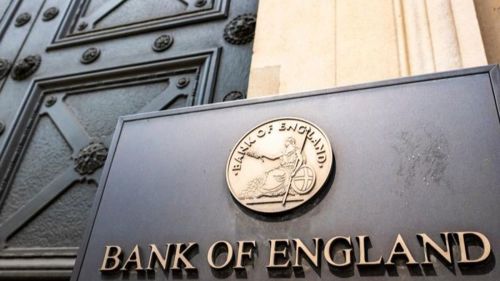The Distillery #17: 2026 Tech Trends, Apple's Satellite Expansion & the Bank of England's Stablecoin Rulebook

We’ve just released our annual whitepapers highlighting the 10 trends in fintech and telecoms to watch over the next twelve months.
And this year’s trends are big. From AI agents and next-gen networks to stablecoins, agentic commerce, and new fraud threats, these are the insights you need to guide your strategy in 2026.
We’ll be diving deeper into both whitepapers next issue — but for now, why not grab your copies now?
💰 Top 10 Fintech & Payments Trends 2026
☎️ Top 10 Telecoms & Connectivity Trends 2026
Also in this edition:
- Apple looks set to push satellite connectivity into the everyday iPhone experience.
- AI-generated fraud is accelerating fast — but here's how to get ahead.
- The Bank of England outlines its first framework for sterling-denominated stablecoins.
- Our latest insights on digital wallets, messaging fraud, travel eSIM, and eCommerce.
TELECOMS & CONNECTIVITY
Apple Looks Set to Expand the iPhone's Satellite Features

Apple is reportedly preparing a major expansion of its satellite capabilities. Beyond upgrading Emergency SOS, the company is exploring media sharing via satellite, satellite-led navigation, and — most notably — an API that lets third-party developers build these features into their own apps.
Together, these moves signal Apple’s intent to make satellite support a normal part of the iPhone experience rather than a last-resort safety net.
Distilled…
🟣 Satellite demand is accelerating fast. Our latest research predicts more than 320 million cellular connections will use satellite services globally by the end of 2026, up from just 60 million this year. Apple’s expanded feature set places the iPhone directly in the path of that growth.
🟣 The commercial question looms large over Apple’s strategy. With existing satellite features offered for free and consumers unwilling to pay more, ROI depends on enterprise and developer adoption. That makes the new API pivotal, and navigation and weather apps are likely to be early adopters; giving Apple a clear monetisable entry point.
🟣 Scale remains the unlock. To maximise revenue, Apple needs both broad API adoption and wider satellite coverage. Stronger coverage enhances the value for developers and positions Apple to take advantage of the longer term potential of non-terrestrial networks.
FREE WEBINAR
AI-generated Fraud is Running Rampant. Are You Ready for 2026?

From synthetic identities to deepfakes and injection attacks, the fraud landscape is evolving at breakneck speed. For businesses, the challenge in 2026 will be to keep pace with a threat that learns and evolves faster than traditional defences can respond.
We've teamed up with Mitek Systems to uncover how AI is rewriting the fraud playbook, and what leading institutions are doing to stay ahead of it.
You'll learn how:
-
AI-generated fraud tactics will evolve in 2026
-
Fraudsters are weaponising generative AI to bypass traditional onboarding and authentication
-
Modern identity verification strategies must evolve, and why Mitek’s award-winning AI innovations are redefining digital trust
FINTECH & PAYMENTS
Bank of England Maps Out a Path for Sterling Stablecoins

The Bank of England is laying the groundwork for sterling-denominated stablecoins. Its newly proposed framework outlines how systemic stablecoins should be backed, managed, and integrated into the UK’s payments landscape. The BoE calls it a “significant step” toward a future where new forms of digital money sit alongside today’s payment rails.
The plan includes strict collateral rules, temporary holding limits, and a staged rollout designed to minimise risks to financial stability during the transition.
Distilled…
🟣 The reserve rules are tight — and could limit competition. Issuers would be allowed to hold up to 60% of reserves in short-term UK government debt, with the remaining 40% placed in non-interest-bearing accounts at the BoE. Systemic issuers could be pushed as high as 95% in reserves. This prioritises stability over profit, but it also means thinner margins; a dynamic that may squeeze out smaller fintechs and concentrate the market around larger, well-capitalised players.
🟣 Temporary holding limits are designed to prevent bank-run dynamics. Individuals may be capped at £20,000 per sterling stablecoin, and businesses at £10 million, at least during the early transition period. The aim is to slow any rapid shift of deposits from banks into digital money. It’s a cautious, staged approach that could temper early adoption, especially among institutions.
🟣 Crypto traders aren’t directly affected, but UK stablecoin builders could be. The rules won’t apply to non-sterling stablecoins like USDT or USDC, which remain under FCA oversight. Exchanges can keep offering them with minimal disruption. But payment and fintech firms developing sterling-backed stablecoins will face new regulatory and operational hurdles. Those planning to enter the UK stablecoin market should start preparing for a more demanding compliance environment.
ICYMI
The Last Drop
We can’t fit all our work from the last fortnight in one issue, so here’s a hand-picked selection of blogs, infographics, and insights that deserve your attention.
💳 More than two-thirds of the globe will be digital wallet users by 2030; signalling a clear shift toward wallet-first payments in both emerging and mature regions.
🚀 Banking is innovating faster than traditional API-driven development allows — and composability and AI-led orchestration are filling the gap. But where does this take the industry next?
📉 Consumer losses to mobile messaging fraud are expected to fall 10% over the next five years, thanks to stronger detection tools and better ecosystem collaboration.
✈️ Travel eSIMs are offering savings of up to 75% per GB of data, compared to roaming. What makes eSIM providers able to offer such low prices?
🛒 Global eCommerce transactions will reach $440 billion by 2029, powered by smoother checkout journeys, embedded payment flows, and the continued rise of agentic retail.
Latest research, whitepapers & press releases
-
 ReportDecember 2025
ReportDecember 2025AI Agents for Customer Experience Platforms Market: 2025-2030
Our comprehensive AI Agents for Customer Experience Platforms research suite comprises detailed assessment of a market that is set to disrupt mobile communications. It provides stakeholders with insight into the key opportunities within the AI agents for customer experience platforms market over the next two years.
VIEW -
 ReportDecember 2025Fintech & Payments
ReportDecember 2025Fintech & PaymentseCommerce Fraud Prevention Market: 2025-2030
Our eCommerce Fraud Prevention research suite provides a detailed and insightful analysis of this evolving market; enabling stakeholders from financial institutions, law enforcement agencies, regulatory bodies and technology vendors to understand future growth, key trends, and the competitive environment.
VIEW -
 ReportNovember 2025Telecoms & Connectivity
ReportNovember 2025Telecoms & ConnectivityeSIMs & iSIMs Market: 2025-2030
Juniper Research’s eSIMs and iSIMs research suite offers insightful analysis of a market set to experience significant growth in the next five years. The research suite provides mobile network operators (MNOs), original equipment manufacturers (OEMs), and eSIM management and platforms vendors with intelligence on how to capitalise on the market growth, and guidance on how eSIM-only devices and sensors, SGP.42, in-factory provisioning, and iSIMs will change the competitive landscape.
VIEW -
 ReportNovember 2025Fintech & Payments
ReportNovember 2025Fintech & PaymentsModern Card Issuing Platforms Market: 2025-2030
Our Modern Card Issuing Platforms Market research suite provides a detailed and insightful analysis of this evolving market; enabling stakeholders from banks, financial institutions, fintech companies, and technology vendors to understand future growth, key trends, and the competitive environment.
VIEW -
 ReportNovember 2025Fintech & Payments
ReportNovember 2025Fintech & PaymentsDigital Wallets Market: 2025-2030
Our digital wallets research suite provides detailed analysis of this rapidly changing market; allowing digital wallet providers to gain an understanding of key payment trends and challenges, potential growth opportunities, and the competitive environment.
VIEW -
 ReportOctober 2025Fintech & Payments
ReportOctober 2025Fintech & PaymentsDigital Identity Market: 2025-2030
Juniper Research’s Digital Identity research suite provides a comprehensive and insightful analysis of this market; enabling stakeholders, including digital identity platform providers, digital identity verification providers, government agencies, banks, and many others, to understand future growth, key trends, and the competitive environment.
VIEW
-
 WhitepaperDecember 2025Telecoms & Connectivity
WhitepaperDecember 2025Telecoms & ConnectivityHuman + AI: Drivers of Customer Experience AI Agents in 2026
Our complimentary whitepaper, Human + AI: Drivers of Customer Experience AI Agents in 2026, examines the key drivers of the AI agents for customer experience platforms market in 2025.
VIEW -
 WhitepaperDecember 2025Fintech & Payments
WhitepaperDecember 2025Fintech & PaymentsBeyond Chargebacks: The True Cost of Fraud for Digital Commerce
Our complimentary whitepaper, Beyond Chargebacks: The True Cost of Fraud for Digital Commerce, examines the state of the eCommerce fraud prevention market; considering the impact of evolving digital fraud strategies, including key trends such as identity theft, account takeovers, chargebacks, policy abuse and friendly fraud.
VIEW -
 WhitepaperNovember 2025Telecoms & Connectivity
WhitepaperNovember 2025Telecoms & ConnectivityeSIM-only Devices: The Impact on Operators, Consumers, and IoT
Our complimentary whitepaper, eSIM-only Devices: The Impact on Operators, Consumers, and IoT, explores the challenges and opportunities for the three segments, with a particular focus on eSIM-only smartphones and SGP.42.
VIEW -
 WhitepaperNovember 2025Fintech & Payments
WhitepaperNovember 2025Fintech & PaymentsUnlocking the Next Stage of Growth for Modern Card Issuing Platforms
This free whitepaper analyses key trends shaping the modern card issuing space, and the ways in which modern card issuing platforms can capture growth.
VIEW -
 WhitepaperNovember 2025Fintech & Payments
WhitepaperNovember 2025Fintech & PaymentsTop 10 Fintech & Payments Trends 2026
Fintech is evolving fast. From stablecoins to agentic AI, our annual guide reveals the shifts redefining payments, digital identity, and the future of money in 2026. Download your copy today.
VIEW -
 WhitepaperNovember 2025Fintech & Payments
WhitepaperNovember 2025Fintech & PaymentsDigital Wallets: Empowering Financial Inclusivity
Our complimentary whitepaper, Digital Wallets: Empowering Financial Inclusivity, examines the state of the digital wallets market; considering the impact of digital wallets on different geographies, how they are shaping the modern payments landscape through lower transaction fees and promoting financial inclusivity for underbanked populations, and how they are competing with established payment methods.
VIEW
-
IoT & Emerging Technology
Juniper Research Unveils Top 10 Emerging Tech Trends to Watch in 2026
January 2026 -
Fintech & Payments
Digital Identity App Usage to Hit 6.2 Billion by 2030, Driven by Shift to Decentralised Models
December 2025 -
Telecoms & Connectivity
Travel eSIM Margins Under Pressure as Revenue per Gigabyte Falls 10% Globally in Two Years
December 2025 -
Telecoms & Connectivity
AI Agents to Power 1,000% More Customer Interactions for Enterprises Globally by 2027
December 2025 -
IoT & Emerging Technology
Global D2C Revenue Set for $370 Million Surge, But Satellite Operators Should Not Chase Full MNO Status
December 2025 -
Fintech & Payments
Digital Goods Fraud to Cost eCommerce Merchants $27 Billion Globally by 2030 as AI Tools Accelerate Attacks
December 2025



















